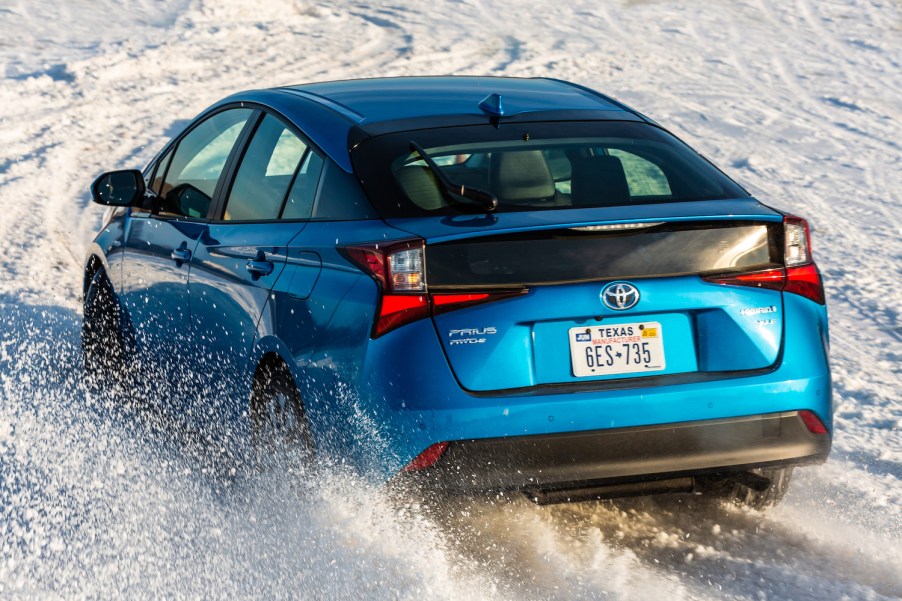
Can Cold Weather Affect a Hybrid Vehicle’s Fuel Efficiency?
If you currently drive a hybrid car or are planning to buy one, then the main highlight of owning it is to get the best fuel economy possible. However, everyday traffic congestion, driving over different types of terrain, and even the weather can have an effect on any car’s overall fuel efficiency. But can cold weather have an effect on a hybrid car’s fuel economy?
A hybrids car’s efficiency suffers in cold weather
Have you ever driven a gas-powered car in below-freezing temperatures and noticed that its fuel economy ends up suffering? That’s typically due to the fact that it takes longer for the car to warm up and when it comes to hybrid cars, the performance suffers even more so.
According to Oards, since a hybrid powertrain consists of a gasoline engine and an electric motor that’s connected to a battery, the cold weather can greatly affect both parts of the setup. For starters, the hybrid battery runs optimally in warmer weather because the chemical reaction from the battery to the hybrid motor goes smoothly if the components are warm.
However, when the weather outside is cold (20 degrees Fahrenheit) or below, it can affect the car’s battery by causing it not to produce as much power. When this happens, the gas engine will have to make up for it, thus consuming more fuel in the process.

How much does cold weather affect a hybrid car’s fuel economy?
According to Fueleconomy.gov, cold weather that’s lower than 20 degrees Fahrenheit can lower a hybrid car’s fuel economy by about 30 to 34%. That means that if you’re used to getting around 50 mpg in your Toyota Prius, you will now have to settle for a more common 33 mpg average. To be honest, that’s still not that bad, but it’s a pretty big hit.
As a homegrown example, we recently drove a 2021 Toyota Venza for a week during a time when the ambient air temperature was a constant 30 to 40 degrees Fahrenheit. It’s not exactly the pre-described 20-degree cold weather zone, but it did the trick when it came to decreasing the car’s overall fuel economy. In the end, we managed to average 33 mpg as opposed to the EPA-estimated 39 mpg in combined driving.

There are ways to increase your hybrid car’s fuel efficiency when it’s cold
That decrease in fuel economy can be daunting when the temperatures drop, however, with the proper care, you can help to mitigate the effects. According to How Stuff Works, making sure that your car is cleared out and not weighed down by cargo or any other stuff is a good place to start. Less weight equates to better fuel economy.
Cold weather also has a great effect on tires as the cooler air causes molecules to contract, which means that your car’s tire can lose pressure. This loss of pressure can have an effect on a hybrid car’s fuel-efficient, low-rolling-resistance tires, which can affect fuel economy as well. In that case, pumping up your car’s tire can help bring its fuel economy up a little when the weather is cold.



